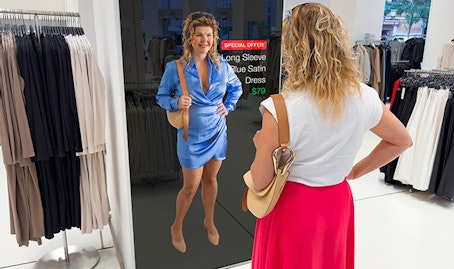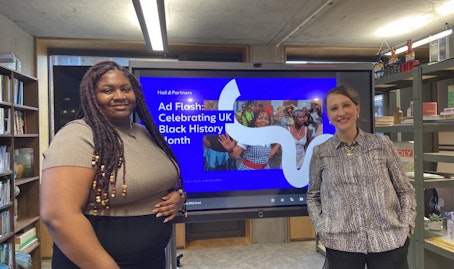Perspectives

In our first blog post, Women’s Health Is Everyone’s Opportunity, we explored how systemic inequities in women’s health have left too many needs unmet. One of the most damaging and persistent drivers of that gap is bias. So much so that women seeking care can and do get stereotyped as a ‘whining woman.’
The cost of gender bias in healthcare market research
The ‘whining woman’ is usually described as a 30- to 50-year-old female patient presenting with chronic, diffuse, or difficult-to-diagnose symptoms. Her problems are often minimized and dismissed, either implicitly or explicitly, as overreactions, anxiety, or exaggeration. This bias is particularly profound in pain management and can have serious consequences. For example, a 2022 Journal of the American Heart Association study found that young female patients aged 18-55 years who presented to emergency departments with chest pain had a 29% longer wait time for potential heart attack evaluation compared with their male counterparts.
Gender bias isn’t just a bad habit, it’s a behavioral pattern that is often inherited, perpetuated, and sometimes unconsciously reinforced during medical training and practice. (And, according to a recent article on health and healthcare systems by the World Economic Forum, “over four of every five women feel like healthcare professionals aren’t listening.”) In behavioral science, this is a classic case of confirmation bias and stereotype reinforcement: when a provider expects a certain type of patient to “complain more,” they interpret new information in ways that confirm that belief.
Addressing gender bias in healthcare & the market opportunities for brands
Gender bias in healthcare isn’t just a social justice issue. It’s a market gap. When symptoms are downplayed or ignored, patients face longer paths to diagnosis (an average of 7–8 years for endometriosis, for example), causing emotional and financial strain. This means delayed treatment adoption, lower adherence, and erosion of trust in the healthcare system. But it also represents an opportunity for health and life sciences brands to step in with solutions, patient advocacy, and education that build credibility and differentiate themselves in a crowded market. Indeed, there are players in the healthcare system that are helping drive greater equity.
What are the key signs of change driving gender equity in healthcare?
- Medical Organizations Driving Gender Equity: Despite these issues persisting, there are people and organizations driving positive change. Professional medical organizations like American Medical Women’s Association (AMWA) and Women in Global Health are pushing for equity in policy and practice. The World Health Organization (WHO) is setting global standards for gender-responsive health service delivery, addressing discrimination, and international efforts for more equitable healthcare systems. Many medical schools now integrate bias training into their curricula.
- Healthcare Brands Advocating for Women: Forward-thinking brands are also fighting for change. Reckitt’s ‘See My Pain’ initiative for Nurofen highlights gender pain gaps and advocates for better attention to women’s symptoms. Bodyform’s #WombStories campaign uses animation and real-life stories to challenge sanitized portrayals of menstruation, endometriosis, miscarriage, and menopause, fostering honest dialogue and empathy in menstrual and reproductive health ads. These campaigns demonstrate that bias can be addressed not only clinically, but overtly and culturally.
Uncovering patient insights: Learnings from our healthcare research and work
We’ve been fortunate to play a role in helping bring greater equity to healthcare. Across Escalent, C Space, and Hall & Partners, we’ve worked with pharma clients to uncover and act on gender bias in ways that directly impact brand strategy and performance:
- Strategic Insights on Chronic Weight Management: We worked with our client to explore how obesity is experienced and addressed based on gender. For women, weight is often deeply interwoven with identity and self-worth, leading to greater stigma, self-esteem challenges, and a heightened urgency to seek solutions. Men, by contrast, tend to view weight as a personal challenge rather than part of identity, often masking insecurities and delaying action. They are also more likely to frame obesity through discipline, believing they should “fix it” themselves before considering medical treatments. These healthcare insights helped our client design messaging and support strategies that validate women’s experiences while respecting men’s desire for autonomy, enabling authentic engagement across both groups.
- Endometriosis Awareness Through Market Research Communities: In a dedicated C Space online community of over 100 women living with endometriosis, we created a safe environment for women to share their experiences with endometriosis that are often minimized in clinical settings. We uncovered the language, metaphors, and stories that helped articulate what had long been overlooked. These actionable insights directly informed our client’s national awareness campaign, enabling the brand to connect with women authentically, challenge outdated perceptions of pain, and ultimately drive over 750,000 visits to their website in just eight weeks.
- Inclusive Research to Validate Perceptions of Pain: In a recent study, we found that female HCPs were significantly more likely than male HCPs to believe that patients experience pain during IUD insertion (63% vs. 47%). This suggests that empathy, or perhaps lived experience, shapes provider assumptions in ways that directly affect patient care. As we thought about what this ultimately meant, we guided our client to consider how they could play a role in validating women’s experiences more consistently to avoid perpetuating a cycle of distrust and disengagement. Could it mean better provider training? More empathetic product design? Campaigns that normalize women’s voices as credible evidence? These are the questions we believe clients must ask if they hope to close the trust gap and design solutions that truly serve women.
- Behavioral-Science-Led Segmentation: We helped our client explore healthcare bias, including gender bias, a complex and multifaceted challenge that requires exploration of the subconscious. Using behavioral science research methodologies, we uncovered biases and heuristics that shape decision-making. Our segmentation solutions identified deeply held beliefs and provided tactics our client could use to address them in customer conversations, tailoring information and education to drive meaningful change.
The opportunity ahead: Advancing women’s health through insights, advocacy and brand leadership
Reimagining how women’s health stories are told and reframing clinical conversations around how women’s symptoms are perceived requires both systemic reform and cultural change. Market research is the bridge between translating lived experience into actionable insights that inform campaigns, products, and services that don’t just sell, but truly serve.
By grounding brand strategy in authentic patient voices and tackling bias head-on, brands can build trust in a market where trust is scarce, differentiate through empathy and evidence, and improve outcomes while expanding access, adoption, and adherence. This is more than a marketing opportunity. It’s an opening to create a future where every woman’s pain, story, and expertise about her own body is met with curiosity, empathy, and action.
Gender bias may be deeply ingrained, but it’s not immovable. The brands that invest now in listening, validating, and advocating for women are positioned to lead.
Meet our authors
Dee Eden, Group Strategy Director, Hall & Partners
Carla Essen, VP, Qualitative Lead Consultant, Escalent
Anna Bridge, Senior Consultant, C Space Health
Talk to our team of experts
Learn how we can deliver actionable insights and creativity to drive brand growth.








